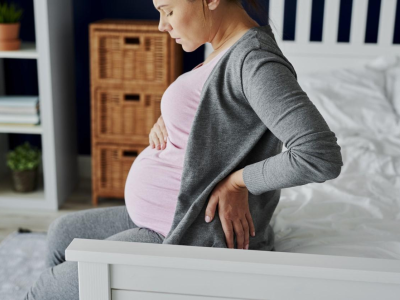Jul 17, 2008 (CIDRAP News) – Recent reports from Indonesian health officials tie the high fatality rate in human H5N1 influenza cases there to the difficulty of diagnosing the disease, late treatment with antiviral drugs, and a shortage of well-equipped hospitals.
The case-fatality rate (CFR) in Indonesia, which leads the world in H5N1 cases, climbed from 63% in 2005 to 80% in 2006 and 85.7% in 2007, according to a report in the journal Annals Academy of Medicine Singapore. The CFR remains high so far this year, with 15 of 18 cases fatal, or 83.3%, according to World Health Organization (WHO) figures.
By comparison, the CFR for the global total of 385 cases with 243 deaths is 63.1%. The fatality rate with Indonesian cases excluded is 53.2% (250 cases with 133 deaths, based on WHO figures).
Two reports in the Singapore journal discuss H5N1 cases in Indonesia. One, written by Indonesian Ministry of Health (MOH) officials, looks at the 116 cases, including 94 fatal ones, the country recorded from 2005 through 2007 (the article also defends Indonesia's refusal to share H5N1 virus isolates with the WHO). A second article, written by hospital physicians, profiles the 27 cases, including 21 fatal ones, treated at Sulianti Saroso Infectious Diseases Hospital in Jakarta during that period.
Hospital deficit called major factor
According to the second report, Indonesia, like most developing countries, has few primary or secondary care hospitals with the protocols, isolation rooms, or cardio-respiratory support equipment to treat patients critically ill with H5N1 influenza.
"This is probably the largest single contributor to the high mortality recorded," says the report, written by Sardikin Giriputro, MD, and colleagues.
The MOH report cites the infection's nonspecific early clinical features, medical providers' unfamiliarity with the disease, and the late clinical stage of patients when hospitalized as potential causes of the high mortality. But with the increasing CFR over time, it adds, "the probability of an increase in the virulence of H5N1 viruses should also be considered."
Without a fast, convenient test for H5N1 infection, the disease is difficult to diagnose, the hospital article says. Because the early signs and symptoms are not specific, primary care physicians "would find it extremely hard to predict which of their dozens of patients with influenza-like illness is going to turn out to have highly pathogenic H5N1 influenza in a few days time," it states.
The MOH report says that 71% of H5N1 patients in Indonesia were treated with the antiviral drug oseltamivir (Tamiflu), but only two patients received it within the recommended time frame of 48 hours after the first symptoms. Those two patients survived. The survival rate decreased as the time to start treatment increased, the report says.
Because early recognition is critical, the hospital report says, "The only conceivable solution is the development of cheap, effective point-of-care tests for H5N1 influenza that are as easy to use as a pregnancy test for example. These could be used by a rural primary healthcare clinic or district hospital in any developing country. This is clearly a challenge for the global scientific community."
Most H5N1 patients were severely ill by the time they were brought to the hospital, the report says. "The vast majority had evidence of the systemic inflammatory response syndrome (SIRS) with marked tachycardia and tachypnoea" (rapid heart and breathing rates).
Gender gap in fatality rate
In other observations, the MOH report says the CFR was significantly higher among females than males—89% versus 73%; it offers no explanation for the difference. Adults had a higher CFR than children, 83% versus 76%, but the difference was not significant. The median age for all case-patients was 20 years.
The MOH report also says that 24% of the 116 cases "occurred in 10 clusters of blood-related family members." But the report offers no opinion on how many cases of person-to-person transmission occurred. As reported previously, person-to-person transmission was considered likely in a widely publicized cluster of eight cases (seven confirmed, one probable) in Sumatra in May 2006.
WHO reports on the Indonesian cases so far this year show only one family case cluster, involving a 38-year-old woman from West Jakarta, who fell ill in late January, and her 15-year-old daughter, who got sick in early February.
According to the MOH authors, less than half of all the Indonesian patients—46%—had an "unmistakable history of direct contact with sick or dead poultry." Another 36% had been near sick or dead poultry without direct contact, and the possible sources for the other 18% were unclear, the report says.
Among the Sulianti Saroso patients, 12 of 27 (44%) had indirect contact with poultry, mainly from visiting markets or areas where poultry outbreaks had occurred, the hospital report says. A smaller, unspecified number had direct contact with poultry, and the source was unclear for the rest. The authors speculate that some of the patients who had no direct contact with poultry might have caught the virus from fertilizers made of chicken manure.
As for the epidemiologic curve, the MOH report says Indonesia averaged 5 cases per month from September 2005 through May 2007, but the rate dropped to 3 cases per month from June through December 2007. The WHO records indicate a similar pace so far this year, with 18 confirmed cases through June, but two thirds of those were in January and February.
While 31 of 33 Indonesian provinces have had H5N1 outbreaks in birds, only 12 provinces have had human cases, the MOH report says.
Giriputro S, Agus R, Sulastri S, et al. Clinical and epidemiological features of patients with confirmed avian influenza presenting to Sulianti Saroso Infectious Diseases Hospital, Indonesia, 2005-2007. Ann Acad Med Singapore 2008 Jun;37(6):454-7 [Full text]
Sedyaningsih ER, Isfandari S, Soendoro T, et al. Towards mutual trust, transparency and equality in virus sharing mechanism: the avian influenza case of Indonesia. Ann Acad Med Singapore 2008 Jun;37(6):482-8 [Full text]



















